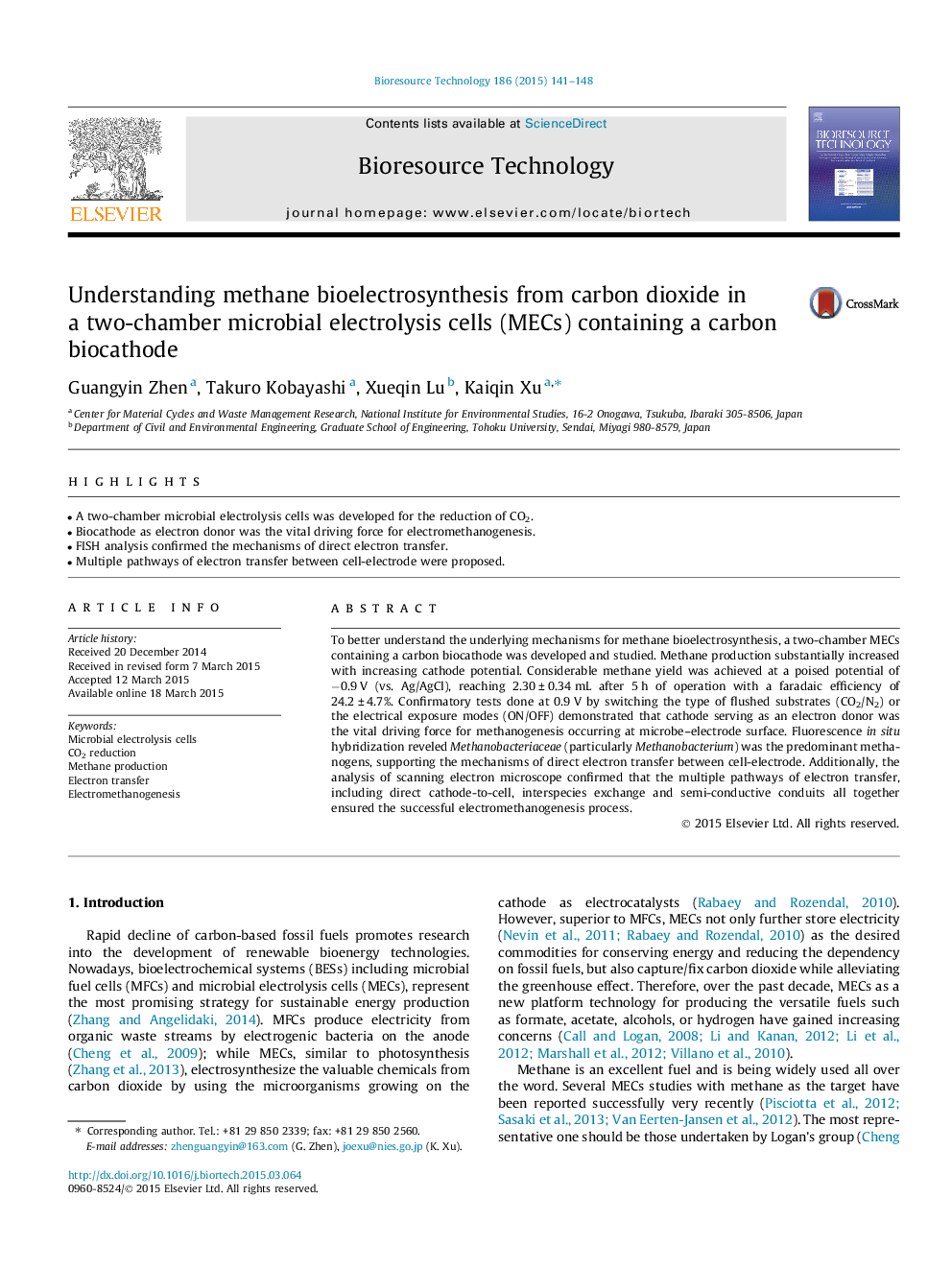| Article ID | Journal | Published Year | Pages | File Type |
|---|---|---|---|---|
| 7074975 | Bioresource Technology | 2015 | 8 Pages |
Abstract
To better understand the underlying mechanisms for methane bioelectrosynthesis, a two-chamber MECs containing a carbon biocathode was developed and studied. Methane production substantially increased with increasing cathode potential. Considerable methane yield was achieved at a poised potential of â0.9 V (vs. Ag/AgCl), reaching 2.30 ± 0.34 mL after 5 h of operation with a faradaic efficiency of 24.2 ± 4.7%. Confirmatory tests done at 0.9 V by switching the type of flushed substrates (CO2/N2) or the electrical exposure modes (ON/OFF) demonstrated that cathode serving as an electron donor was the vital driving force for methanogenesis occurring at microbe-electrode surface. Fluorescence in situ hybridization reveled Methanobacteriaceae (particularly Methanobacterium) was the predominant methanogens, supporting the mechanisms of direct electron transfer between cell-electrode. Additionally, the analysis of scanning electron microscope confirmed that the multiple pathways of electron transfer, including direct cathode-to-cell, interspecies exchange and semi-conductive conduits all together ensured the successful electromethanogenesis process.
Keywords
Related Topics
Physical Sciences and Engineering
Chemical Engineering
Process Chemistry and Technology
Authors
Guangyin Zhen, Takuro Kobayashi, Xueqin Lu, Kaiqin Xu,
